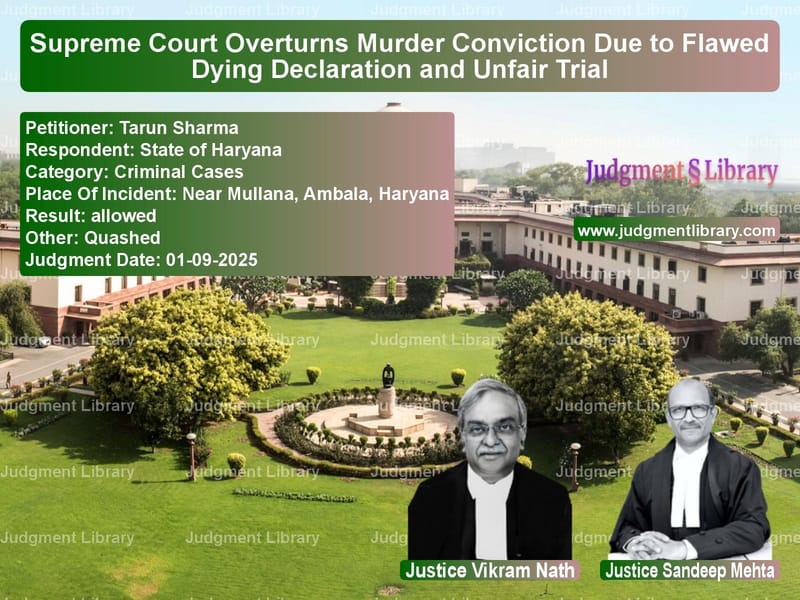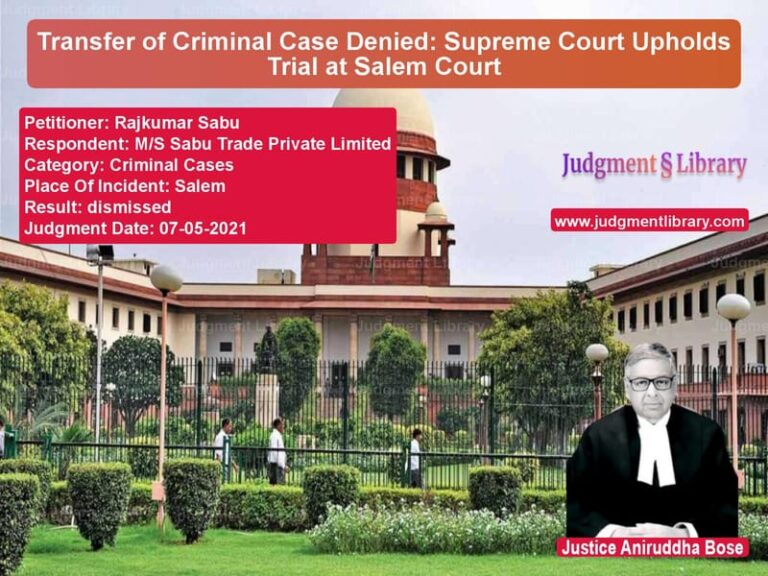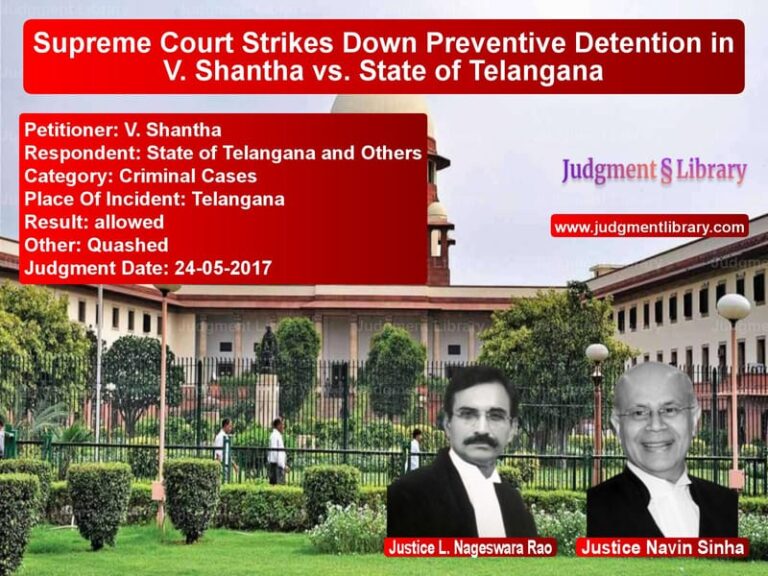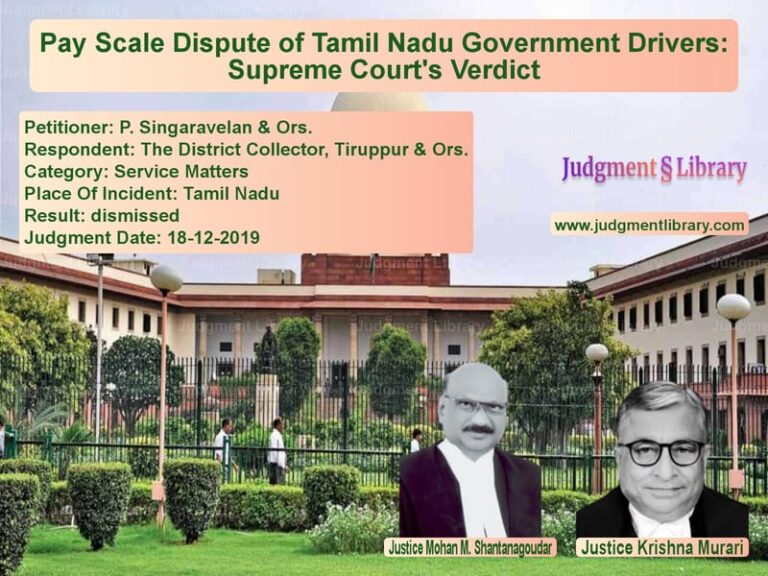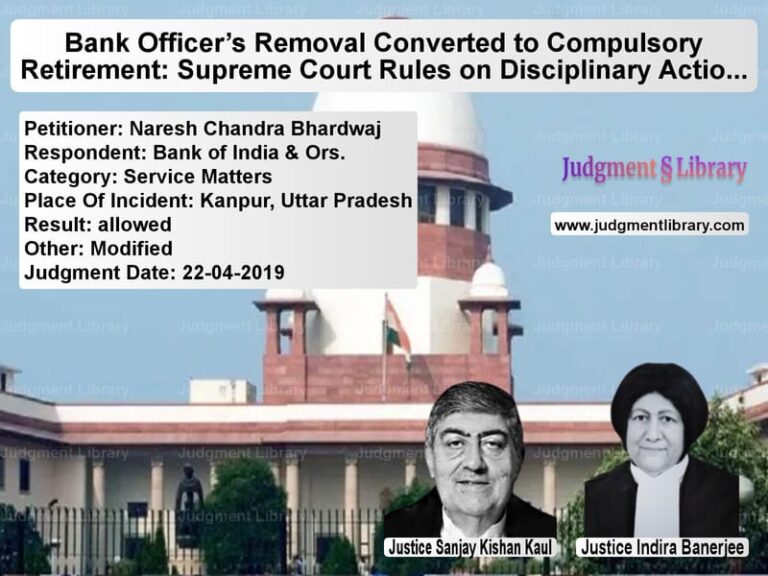Supreme Court Overturns Murder Conviction Due to Flawed Dying Declaration and Unfair Trial
In a significant judgment delivered on September 1, 2025, the Supreme Court of India acquitted Tarun Sharma, who had been convicted and sentenced to life imprisonment for a murder that occurred back in 2012. The Court found glaring lapses in the investigation and the recording of the dying declaration, which was the sole basis of his conviction. The case, Tarun Sharma vs State of Haryana, highlights the critical importance of procedural fairness and the sanctity of evidence in the criminal justice system.
The story begins on the night of March 31, 2012, when Munish Kumar and his brother Amit Bakshi were returning to their village from Ambala by car. Near Mullana, their vehicle was intercepted by two other cars. According to the prosecution, three persons alighted, one of whom was identified as Tarun Sharma. An altercation ensued, during which Munish Kumar sustained serious injuries, including a stab wound to his stomach. He was rushed through a series of hospitals—first to CHC Mullana, then to General Hospital Ambala City, then to GMCH Sector-32 in Chandigarh, and finally to PGI Chandigarh, where he succumbed to his injuries on April 14, 2012.
The entire case against Tarun Sharma rested on a statement recorded by Sub-Inspector Somnath (PW-17) at the PGI, which was treated as a dying declaration. In this statement (Exh. P-34), Munish Kumar allegedly identified Tarun Sharma as one of his assailants. Based on this, Tarun Sharma was convicted under Section 302 of the Indian Penal Code and sentenced to life imprisonment by the trial court, a decision later upheld by the Punjab and Haryana High Court.
Unfair Hearing in the High Court
Before delving into the evidence, the Supreme Court expressed serious concern over the manner in which the High Court had handled the appeal. The matter was initially listed only for a minor application regarding the release of a car’s registration certificate. However, the High Court unexpectedly took up the main appeal for hearing on the same day. The counsel for the accused was unavailable, so the Court appointed an amicus curiae. Crucially, the amicus was not given the case records or any reasonable time to prepare, and the hearing was concluded and judgment reserved on that very day.
The Supreme Court strongly condemned this approach, emphasizing the fundamental right to a fair trial. It quoted its own precedents to underscore the importance of effective legal representation. In Chaluvegouda v. State, the Court had observed, “The right to be represented by a lawyer must not be an empty formality. It must not be a sham or an eyewash… the due process of law… demands that a person not only be given an opportunity of being heard before being condemned, but also that such opportunity be fair, just and reasonable.”
Similarly, in Mohd. Sukur Ali v. State of Assam, the Court had laid down that “in the absence of a counsel, for whatever reasons, the case should not be decided forthwith against the accused but in such a situation the Court should appoint a counsel… as amicus curiae and decide the case after fixing another date and hearing him.” The Supreme Court noted that the High Court’s haste had violated these foundational principles, especially in a case involving a life sentence.
The Central Flaw: The Unreliable Dying Declaration
The core of the prosecution’s case was the dying declaration (Exh. P-34). The Supreme Court, however, found this piece of evidence to be riddled with fatal infirmities.
First, the star eyewitness, Amit Bakshi (PW-1), the brother of the deceased who was present in the car during the attack, turned hostile. He did not support the prosecution’s story. In his testimony, he stated, “We could not identify the unknown persons who caused injuries to Munish in scuffle due to darkness… I have seen the accused present in the court today, they had not caused any injuries to Munish… Munish remained unconscious till his death, except for a short time but he was not in a position to speak though he was conscious.”
This testimony was crucial. It directly contradicted the dying declaration by stating that the assailants could not be identified due to darkness and that the deceased was never in a fit condition to make a coherent statement. The Court held that the testimony of a hostile witness cannot be discarded entirely. The portions of Amit Bakshi’s statement that were consistent and corroborated by other evidence had to be given due weight.
Second, the prosecution failed to establish the most basic requirement for a dying declaration: that the deceased was in a fit state of mind to make it. The doctor who had allegedly issued a fitness certificate (Exh. P-33) was never identified or examined in court. This was a monumental lapse. The Supreme Court noted that the trial court had acted with “total apathy” in not summoning this doctor as a court witness. Without the doctor’s testimony, the defense had no opportunity to challenge the veracity of the fitness certificate.
Third, the police officer who recorded the dying declaration, Sub-Inspector Somnath (PW-17), did not record his own satisfaction that Munish Kumar was fit to make a statement. The Constitution Bench of the Supreme Court in Laxman v. State of Maharashtra had clearly held that “the person who records a dying declaration must be satisfied that the deceased was in a fit state of mind.” This foundational step was completely missing.
Fourth, the dying declaration itself did not mention the time it was recorded. This omission made it impossible to correlate the statement with the medical condition of the injured at that specific time, further casting doubt on its authenticity.
Fifth, no medical records from GMCH Sector-32 or PGI Chandigarh were produced in court. The doctors who had initially treated Munish Kumar at CHC Mullana and General Hospital Ambala (PW-9 and PW-10) did not state that he was ever in a condition to speak. The absence of these contemporaneous medical records created a void that the prosecution could not fill.
Other Inconsistencies and Weak Evidence
The Supreme Court also pointed out other inconsistencies that weakened the prosecution’s case. The dying declaration named other assailants, including Sanjay and Bittoo. However, the investigating officer exonerated Sanjay for lack of evidence, and the trial court acquitted Bittoo (Balwinder Singh). This selective reliance on the dying declaration undermined its overall credibility.
The prosecution also tried to rely on the recovery of a knife at the instance of the appellant. However, the Forensic Science Laboratory (FSL) report did not indicate any blood group on the weapon, and no serological report was produced to link the blood to the deceased. The Court held that in the absence of such scientific corroboration, and with the primary evidence (the dying declaration) being unreliable, the recovery was inconsequential.
The Supreme Court’s Conclusion and Acquittal
After a thorough analysis, the Supreme Court concluded that the prosecution had failed to prove its case beyond a reasonable doubt. The dying declaration, the sole basis of conviction, was untrustworthy. The Court summarized the key infirmities: the deceased was unconscious and not in a fit state to speak; the certifying doctor was not examined; no medical records were produced; the recording officer did not record his satisfaction; and the declaration lacked a time of recording.
The Court reiterated the principles governing dying declarations, quoting from Athir v. Gout. (NCT of Delhi): “When the eyewitness affirms that the deceased was not in a fit and conscious state to make the dying declaration, medical opinion cannot prevail.” In this case, the eyewitness (Amit Bakshi) and the treating doctors all pointed towards the deceased’s unfitness, making the dying declaration inadmissible.
Consequently, the Supreme Court set aside the judgments of the trial court and the High Court. Tarun Sharma was acquitted of all charges and ordered to be released from prison immediately, unless required in any other case. This judgment serves as a powerful reminder of the high standards of proof required in criminal cases and the judiciary’s role as the ultimate protector of liberty and justice.
Petitioner Name: Tarun Sharma.Respondent Name: State of Haryana.Judgment By: Justice Vikram Nath, Justice Sandeep Mehta.Place Of Incident: Near Mullana, Ambala, Haryana.Judgment Date: 01-09-2025.Result: allowed.
Don’t miss out on the full details! Download the complete judgment in PDF format below and gain valuable insights instantly!
Download Judgment: tarun-sharma-vs-state-of-haryana-supreme-court-of-india-judgment-dated-01-09-2025.pdf
Directly Download Judgment: Directly download this Judgment
See all petitions in Murder Cases
See all petitions in Bail and Anticipatory Bail
See all petitions in Attempt to Murder Cases
See all petitions in Custodial Deaths and Police Misconduct
See all petitions in Legal Malpractice
See all petitions in Judgment by Vikram Nath
See all petitions in Judgment by Sandeep Mehta
See all petitions in allowed
See all petitions in Quashed
See all petitions in supreme court of India judgments September 2025
See all petitions in 2025 judgments
See all posts in Criminal Cases Category
See all allowed petitions in Criminal Cases Category
See all Dismissed petitions in Criminal Cases Category
See all partially allowed petitions in Criminal Cases Category

